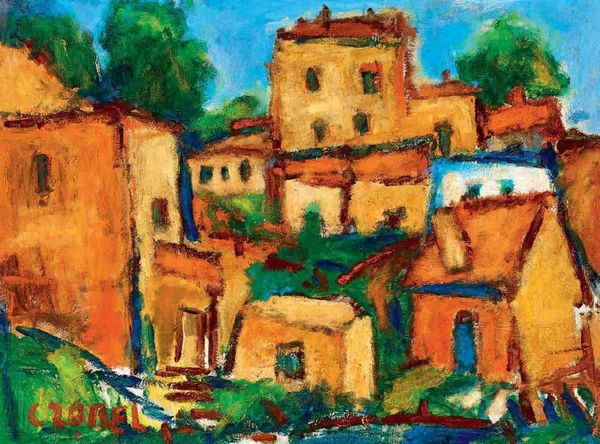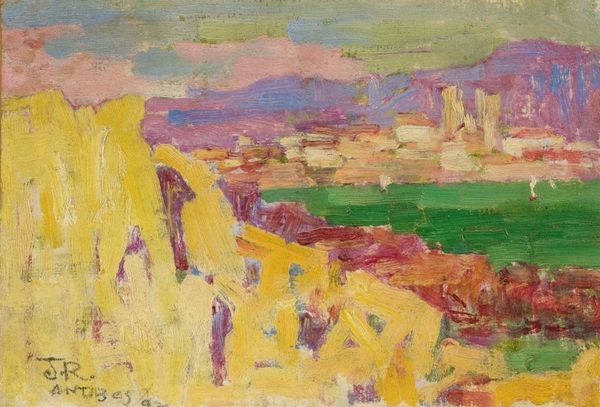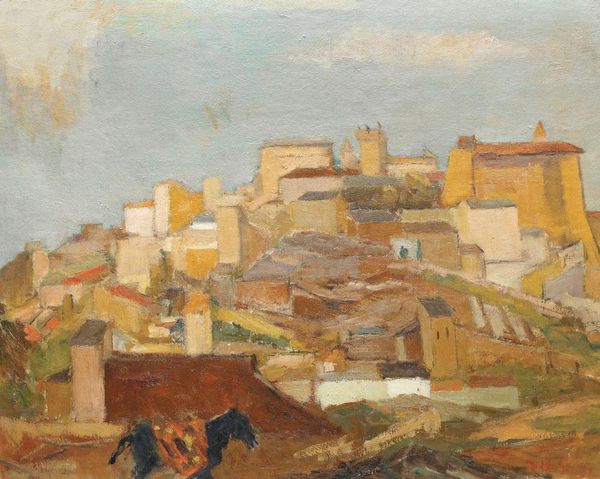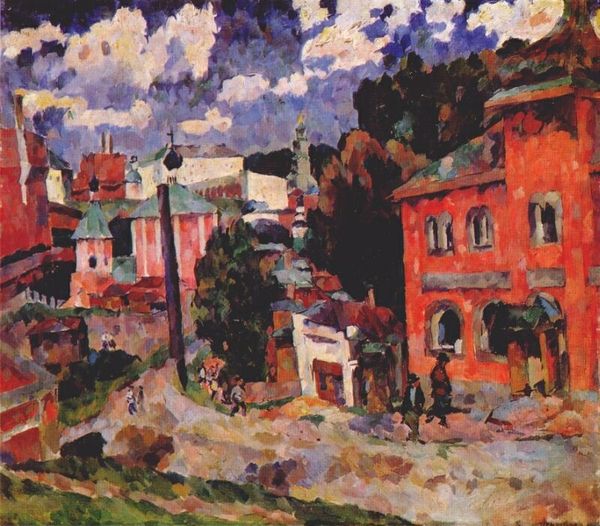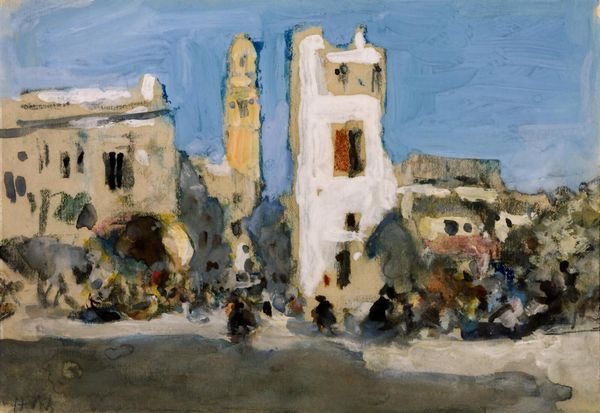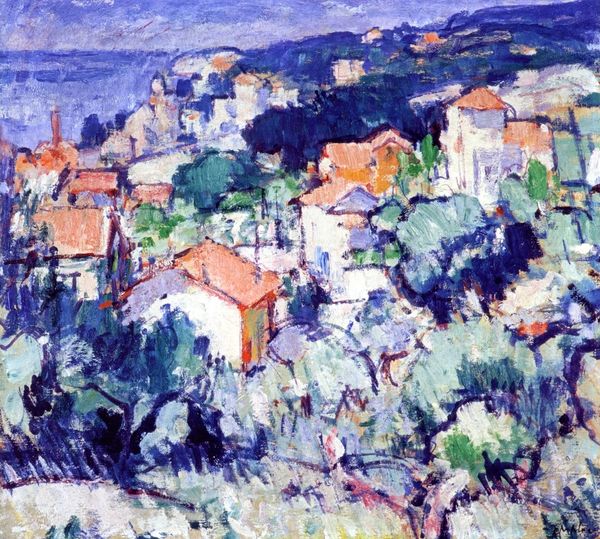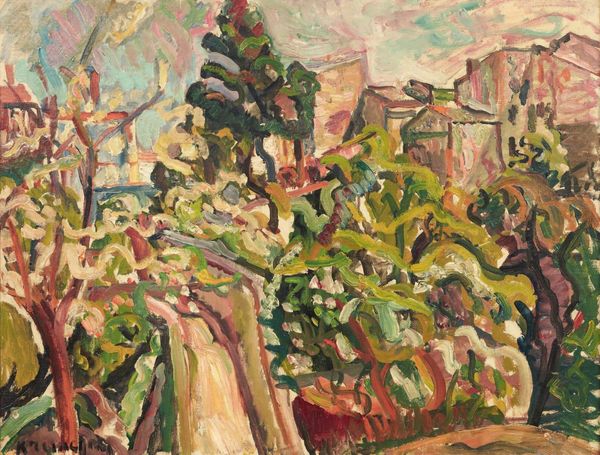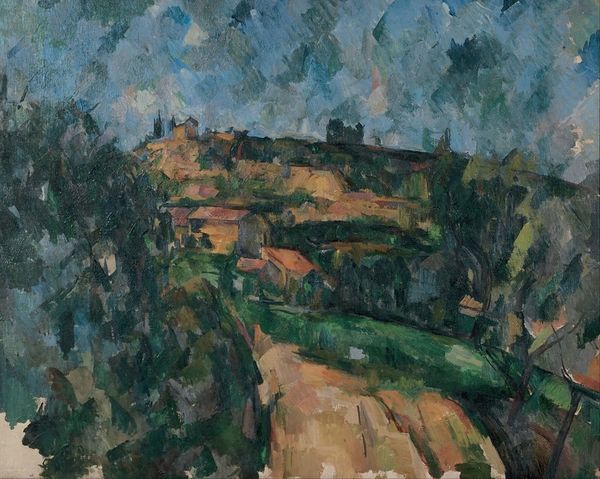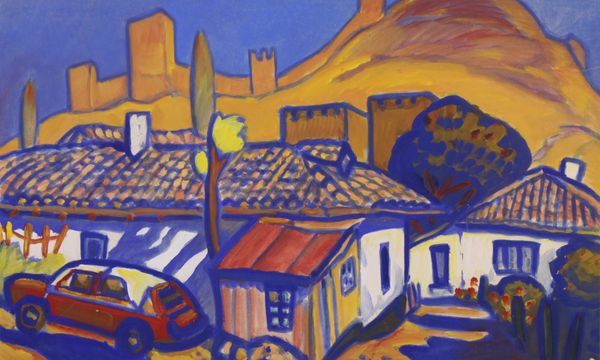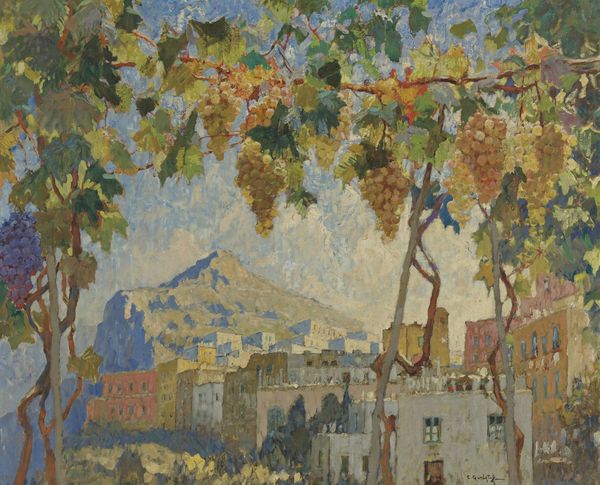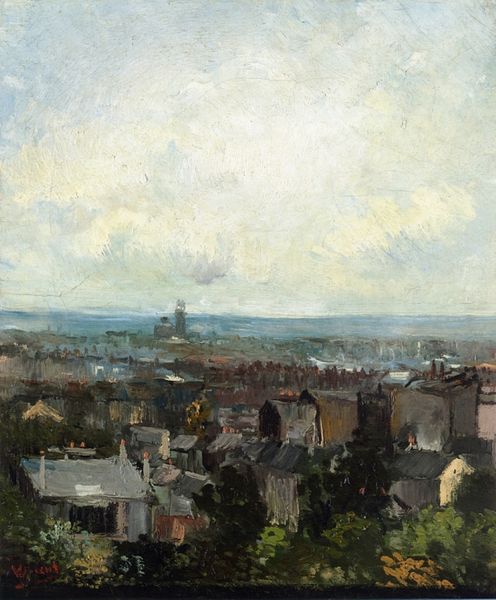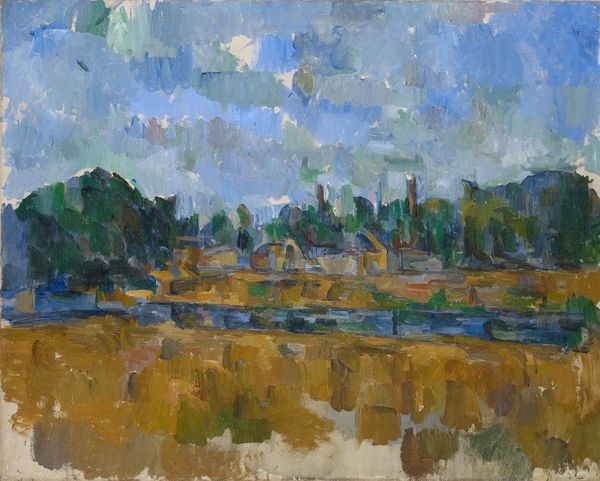
Copyright: Public domain
Editor: We're looking at "View of Capri" by Konstantin Gorbatov, painted in 1926 using oil paints. I’m struck by the energy in this piece, the vibrant brushstrokes and color palette capture a real sense of light and atmosphere. How do you interpret this work? Curator: For me, this painting operates as a historical document, consciously or unconsciously engaging with existing social power dynamics. Consider Capri at this time: it was already a mythologized tourist destination. Gorbatov, as a Russian émigré, positions himself as an outsider looking in. Are we seeing Capri as it exists or are we looking at the orientalizing, colonial gaze imposed on a landscape already commodified by the West? Editor: That’s a perspective I hadn’t considered. So, the seemingly innocent landscape becomes a site of complex social and political issues. What about his artistic style? Curator: Exactly! And his style further complicates this. The Post-Impressionist style, while seemingly focused on capturing light and form, also serves as a lens through which we interpret the landscape. The gestural brushstrokes, the somewhat distorted perspective, create a particular, and subjective, viewing experience. Does the active brushstroke suggest the energetic flow, perhaps the active labor necessary to commodify Capri as an imagined landscape? Editor: It's fascinating how much deeper the artwork becomes when we examine its cultural context and artistic style. It moves beyond a pretty picture. Curator: Precisely. It encourages us to question our own perspectives and consider the power dynamics embedded in the act of viewing and representing a place. We must always critically engage with these idyllic depictions. Editor: I’ll definitely be thinking about this painting differently now. Thanks for sharing your insights. Curator: It’s a two-way street. Art history is not a fixed narrative, and these conversations continually enrich my own understanding.
Comments
No comments
Be the first to comment and join the conversation on the ultimate creative platform.
